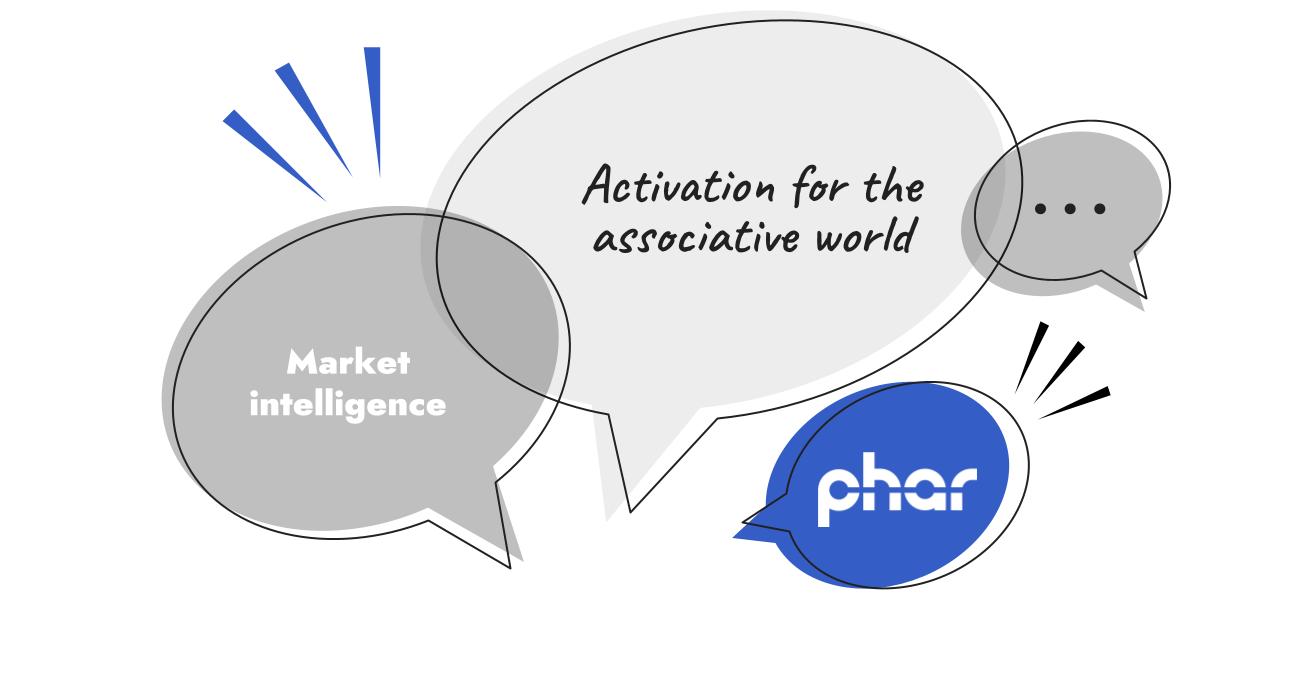The PHAR team is very active with associations that play an important role at both the economic and community levels. These associations act as an anchor between the private sector, the research sector and the economic development sector.
In this article, you will read some of our observations on how these partners are using business intelligence to address key issues of the day.
Business model, sponsorships and product/service development
According to a 2021 study shared by the publication Association Now, 78% of U.S. associations reported developing new services during the year.
Indeed, the strong pressure on revenue growth to offset rising operating costs and salary conditions in today's ultra-competitive market is leading to a very active development of new products and services for members and an upsurge in political advocacy activities to break the funding status quo.
Thanks to market intelligence, we are able to identify international best practices in the sector, trends in terms of the needs of the members of these associations and we monitor the work and committees of public authorities.
A new role for the association in a complex environment
In these times of upheaval (labor, inflation, procurement, public policy, rising protectionism, and the undermining of the globalization model), we see the association playing an increased role as a reference point and beacon for members. According to the same study cited above, 56% of association members surveyed mentioned this role of referent as the main benefit sought when renewing their membership for 2022-2023. In the case of professional associations, this translates into a need to acquire skills and share knowledge.
Market intelligence is the tool par excellence to follow a multitude of issues and share intelligence-rich content for members!
Digital shift, virtual experience and metavers
The digital shift represents an opportunity for associations to deploy and extend their geographic or sectoral reach. You can probably observe the explosion of content and webinars on a multitude of issues. In order to succeed, it is important to understand the needs of the association's clientele in order to offer a high-end experience.
It is also important to note that the digital shift brings additional functions to political advocacy initiatives. There is a lot of competition to occupy media space and influence policy. As a result, associations are redoubling their efforts to boost their communications and raise awareness of their members' issues.
Depending on the type of market intelligence desired, this allows you to keep an eye on market trends, best practices in digital marketing, public policies and to feed your content strategy.
Governance, sustainable development, CSR
While these topics are becoming increasingly important within associations, they cover a broad spectrum and developing realistic sustainability and social responsibility policies and applications for boards of directors and executives can be complex. Having an adequate collective understanding of these issues is already a challenge for associations.
Market intelligence allows us to follow the trends and the cases of application of these new practices.
Employer branding, telework and diversity
As a result of the new model and the current workforce crisis, associations are seeing a marked increase in turnover and hard-to-fill positions. This issue is exacerbated by the visibility that employees enjoy in the ecosystem and the lower salaries observed in the association environment than in the corporate environment.
On the other hand, some associations benefit from the assistance of volunteers (administrators or others). The study of trends in this area shows that these volunteers are increasingly selective in their choice of organizations, especially since their commitment has been increasing for several years.
New practices in inclusion and diversity also raise many questions about implementation and best practices.
Market intelligence is used to monitor best practices on social networks in terms of employer branding and diversity. Bringing this information to senior management and the board of directors allows for innovative practices to be put in place.
In conclusion:
Market intelligence is a valuable tool for associations, it allows them to gather the intelligence necessary for its development and influence.
September 13, 2022
